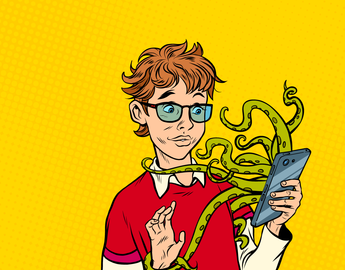
Lesson 1: Introduction to managing team projects
Team projects and student wellbeing
Teamwork in higher education is associated with social, psychological, and academic benefits (Laal & Ghodsi, 2012) that will be valuable to students in future academic and workplace contexts. Although numerous benefits of collaborative learning have been identified, group work is commonly a source of stress and frustration for students. Indeed, aversive experiences in past collaborative settings may induce grouphate, a term coined by Sorenson (1981) to describe feelings of dread when faced with the prospect of group work.
Linking teamwork and student mental health
Dr. Melissa Boyce, PhD, associate dean (undergraduate programs and student affairs) in the Faculty of Arts talks about why she uses team projects in her courses and how they can positively impact student mental health and well-being when they are well-designed.
Strategies for building wellbeing into team projects
Incorporating principles of wellbeing into team project design is essential to facilitating positive team interactions and preventing grouphate. Baik et al. (2017) identified several ways in which courses can be intentionally designed to promote student wellbeing. Each of these is provided in Table 1 along with examples of how each strategy can be used to facilitate teamwork that is conducive to students’ wellbeing.
Possible applications:
- Allow teams to choose project topics
- Ask teams to write project outlines for how they will demonstrate mastery of learning outcomes identified in grading rubric
Possible applications:
- Provide formative feedback on project proposal or outline
- Use a criterion-based grading rubric to assess team projects
Possible applications:
- Build course content around team project
- Incorporate team presentations/teaching into course curriculum
- Schedule class time for students to work on team project
Possible applications:
- Review project instructions and address student questions in class
- In advance, provide students with all grading rubrics that will be used to assess their work
- Provide project exemplars or templates where appropriate
- Include deadlines for components of the project to help teams manage expectations
- Outline steps for students to seek clarification or support if a question or conflict arises
Possible applications:
- Build authentic learning experiences into project learning outcomes
- Discuss the benefits of collaborative learning with the class
- Use low stakes assessment (i.e., less than 20% of final grade)
- Include a peer evaluation component in the assessment to promote accountability (e.g., www.itpmetrics.com)
The potential benefits of collaborative learning experiences for students’ personal and academic growth are clear. To realize these benefits, it is crucial that instructors ensure that students are adequately supported and enabled to work effectively with one another. The strategies highlighted above help promote healthy team functioning and support students’ wellbeing to facilitate students’ ability to achieve maximum benefits from (and even look forward to) teamwork!
Additional resources
Tips on being an effective team member from the Centre for Teaching Excellence at the University of Waterloo.
Additional tips for teaching teamwork skills from Edith Cowan University, Australia.
CliftonStrengths® is based on positive psychology and focuses solely on your unique strengths, and in particular your “Top 5” themes of talent. It helps to identify the sources of your strengths, to understand behaviours and to consider how your strengths contribute to your personal brand. It also gives the opportunity to build on your greatest talents, and develop an individualized plan to discover and develop strengths for your academics, career and beyond.
Lesson checklist
-
Explain the benefits and challenges of team projects
-
Identify different technology for creating teams and supporting team projects
-
Reflect on strategies to support student wellbeing when designing team projects
-
Complete the worksheet to identify how you can incorporate these strategies into your team project design
References
Baik, C., Larcombe, W., Brooker, A., Wyn, J., Allen, L., Brett, M., Field, R., & James, R. (2017). Enhancing student mental wellbeing: A handbook for academic educators. Melbourne, AU: The University of Melbourne.
Laal, M., & Ghodsi, S.M. (2012). Benefits of collaborative learning. Procedia-Social and Behavioral Sciences, 31, 486-490.
Sorensen, S. M. (1981). Grouphate: a negative reaction to group work. Paper presented at the meeting of the International Communication Association, Minneapolis, MN, May.



